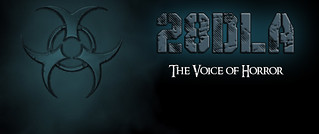*this article is provided by guest writer Brandon Engel. Brandon is a horror and history buff. In this article, Brandon connects some of the biggest names in film with one of the world's most notorious killers and cannibals - Ed Gein.
Ed Gein not only inspired a treasure trove of brutally beloved horror movies, including the first slasher film ever made, but he also defined an archetype and influenced a trope that has been used in popular fiction ever since his capture in 1957.
Ed Gein was born in 1906 and raised in the tiny rural town of Plainfield, WI, by his violent alcoholic father and religious zealot mother. His mother greatly influenced his warped view of women and sexuality. When his mother died of a stroke in 1945, Gein’s mental health steadily declined. Like the fictional Buffalo Bill in The Silence of the Lambs (1991) and Leatherface in The Texas Chainsaw Massacre (1974), real-life Gein used the flesh of corpses to create gruesome masks and clothing.
Many people believe that the suit Gein created from the torso of a woman sprang from a desire to be more like his overbearing mother, just as Norman Bates, the character he inspired in the iconic slasher film Psycho (1960), exhibits an unhealthy obsession with his deceased mother. The horrifying discoveries at Gein's isolated farmhouse in a town of less than 900 residents shocked the nation, and introduced a twisted new fascination with rural horror into the cultural psyche of American pop culture.
Grim Inspiration
Since Alfred Hitchcock's Psycho introduced (based upon the seminal novel by Robert Bloch) a new sub-genre of slasher horror in Hollywood, many films have explored the themes of isolation and madness lurking in the outskirts of mainstream society. Gein's sleepy hometown and isolated environment put a dark spin on stereotypes of white people in the rural American south and influenced the hixploitation sub-genre of films that is still going strong today.
Some of these films achieved notoriety and popularity among horror fans, and many of these generated sequels and remakes, such as Maniac (1980), which was remade in 2012, and The Hills Have Eyes (1977), which was remade in 2006 and followed-up with a sequel in 2007, and yet another sequel is in the works. Many of the most successful of these films include elements of Gein's horrible acts: cannibalism committed by a dysfunctional, off-the-grid family in The Texas Chainsaw Massacre, House of 1000 Corpses (2003) and Motel Hell (1980), whereas films such as Psycho, Silence of the Lambs and Maniac focus on oedipal obsession with mothers and human taxidermy.
As with any trend, however, this subgenre of horror spawned more failures than successes, and for every sleeper like The Texas Chainsaw Massacre, there are a dozen 'B' movies that fell by the wayside, such as Deranged (1974), Three on a Meathook (1972) and even the Steve Buscemi comedy Ed And His Dead Mother. Deranged, however, is enjoying a comeback of sorts thanks to special Midnite Movies special “Double Feature” disk that bills the film with Motel Hell, and both films have also been picked up by niche television networks like Robert Rodriguez’ horror network El Rey for availability), although most of these films, sadly, have yet to be join the ranks of the oddities streamable on Netflix.
For over 50 years, Gein's legacy has been stamped into America's cinematic tradition, and influenced hundreds of movies, both beloved and forgotten. His strange obsessions and gruesome actions put his tiny Wisconsin town on the map, not just in 1957 headlines, but also on the road-map of modern pop culture. The books and movies Gein inspired have been enjoyed and reviled for decades, and will continue to be enjoyed by horrified audiences for years to come.
Subscribe to 28 Days Later: An Analysis Email Subscription
Ed Gein not only inspired a treasure trove of brutally beloved horror movies, including the first slasher film ever made, but he also defined an archetype and influenced a trope that has been used in popular fiction ever since his capture in 1957.
Ed Gein was born in 1906 and raised in the tiny rural town of Plainfield, WI, by his violent alcoholic father and religious zealot mother. His mother greatly influenced his warped view of women and sexuality. When his mother died of a stroke in 1945, Gein’s mental health steadily declined. Like the fictional Buffalo Bill in The Silence of the Lambs (1991) and Leatherface in The Texas Chainsaw Massacre (1974), real-life Gein used the flesh of corpses to create gruesome masks and clothing.
Many people believe that the suit Gein created from the torso of a woman sprang from a desire to be more like his overbearing mother, just as Norman Bates, the character he inspired in the iconic slasher film Psycho (1960), exhibits an unhealthy obsession with his deceased mother. The horrifying discoveries at Gein's isolated farmhouse in a town of less than 900 residents shocked the nation, and introduced a twisted new fascination with rural horror into the cultural psyche of American pop culture.
Grim Inspiration
Since Alfred Hitchcock's Psycho introduced (based upon the seminal novel by Robert Bloch) a new sub-genre of slasher horror in Hollywood, many films have explored the themes of isolation and madness lurking in the outskirts of mainstream society. Gein's sleepy hometown and isolated environment put a dark spin on stereotypes of white people in the rural American south and influenced the hixploitation sub-genre of films that is still going strong today.
Some of these films achieved notoriety and popularity among horror fans, and many of these generated sequels and remakes, such as Maniac (1980), which was remade in 2012, and The Hills Have Eyes (1977), which was remade in 2006 and followed-up with a sequel in 2007, and yet another sequel is in the works. Many of the most successful of these films include elements of Gein's horrible acts: cannibalism committed by a dysfunctional, off-the-grid family in The Texas Chainsaw Massacre, House of 1000 Corpses (2003) and Motel Hell (1980), whereas films such as Psycho, Silence of the Lambs and Maniac focus on oedipal obsession with mothers and human taxidermy.
As with any trend, however, this subgenre of horror spawned more failures than successes, and for every sleeper like The Texas Chainsaw Massacre, there are a dozen 'B' movies that fell by the wayside, such as Deranged (1974), Three on a Meathook (1972) and even the Steve Buscemi comedy Ed And His Dead Mother. Deranged, however, is enjoying a comeback of sorts thanks to special Midnite Movies special “Double Feature” disk that bills the film with Motel Hell, and both films have also been picked up by niche television networks like Robert Rodriguez’ horror network El Rey for availability), although most of these films, sadly, have yet to be join the ranks of the oddities streamable on Netflix.
For over 50 years, Gein's legacy has been stamped into America's cinematic tradition, and influenced hundreds of movies, both beloved and forgotten. His strange obsessions and gruesome actions put his tiny Wisconsin town on the map, not just in 1957 headlines, but also on the road-map of modern pop culture. The books and movies Gein inspired have been enjoyed and reviled for decades, and will continue to be enjoyed by horrified audiences for years to come.
Subscribe to 28 Days Later: An Analysis Email Subscription


 Wednesday, August 06, 2014
Wednesday, August 06, 2014
 Anonymous
Anonymous




 Posted in:
Posted in: 


0 comments:
Post a Comment